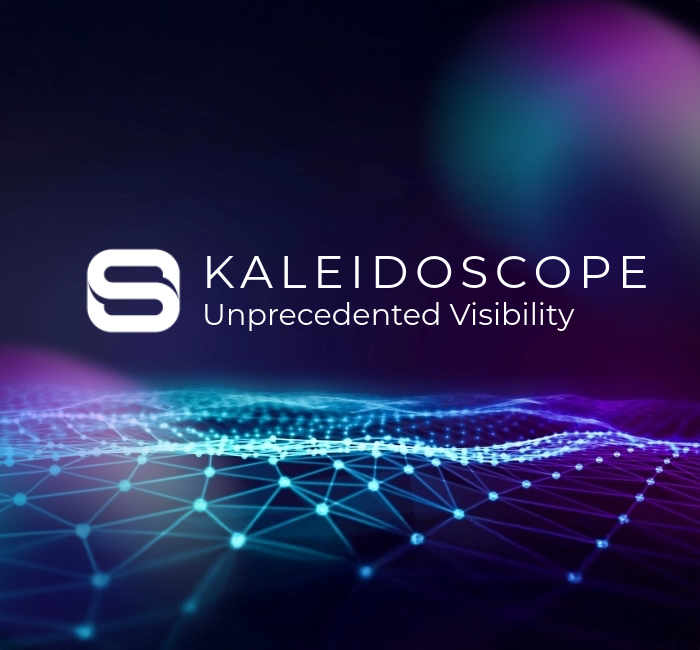In the fast-paced world of supply chain execution, the right Labor Management System (LMS) can be the difference between a well-oiled operation and one that struggles to keep up. As workforce challenges evolve driven by shifting customer expectations, rising labor costs, and emerging technologies. LMS platforms are advancing to meet new demands.
At Open Sky Group, we’ve seen firsthand how Labor Management Systems have transformed from basic productivity tracking tools into sophisticated, strategic assets. Modern labor management software now provides valuable business insights by leveraging workforce management tools that centralize organizational data and enable real-time reporting, helping organizations make informed decisions and monitor overall performance. Looking ahead, several key trends are shaping the future of LMS technology. Companies that understand and act on these trends will be better positioned to reduce costs, boost productivity, and retain top talent.
Introduction to Labor Management
Labor management is at the heart of effective workforce management, ensuring that every labor resource is utilized to achieve key operational goals. A robust labor management system (LMS) serves as a powerful software solution, enabling organizations to streamline administrative tasks, optimize staffing, and control labor costs. By leveraging an LMS, businesses gain real-time insights into workforce performance, allowing them to make data-driven decisions that align labor resources with operational requirements. This proactive approach not only helps reduce unnecessary labor costs but also ensures that staffing levels are always matched to business needs, supporting both productivity and profitability. Ultimately, a well-implemented labor management system empowers organizations to meet their operational goals efficiently and adapt quickly to changing demands.
Greater Integration with Warehouse Labor Management and Supply Chain Systems
The days of operating LMS in isolation are over. The future is about seamless integration with Warehouse Management Systems (WMS), Transportation Management Systems (TMS), and other enterprise solutions. A warehouse management system streamlines inventory management and order fulfillment processes, while integrating with labor management systems to enhance workforce performance and operational efficiency.
The convergence enables real-time visibility into both labor and operational workflows, creating a single version of the truth for decision-makers.
With integrated systems, companies can:
- Coordinate labor assignments based on inbound and outbound demand
- Automatically adjust staffing levels in response to changing order volumes
- Analyze labor performance in the context of overall operational efficiency
- Support labor planning by optimizing workforce allocation and enabling real-time labor tracking
By breaking down data silos, this trend empowers supply chain leaders to make faster, more informed decisions that balance cost, service, and employee satisfaction. Integrating project management with LMS and WMS further improves workflow efficiency and ensures accurate data synchronization across departments.
AI-Driven Forecasting and Scheduling
Artificial Intelligence is no longer a future concept – it’s here, and it’s changing how LMS platforms operate. AI-powered LMS solutions can analyze historical data, current order volumes, and external factors (such as seasonal peaks or promotions) to predict labor demand with remarkable accuracy. Improved visibility into employee availability helps streamline scheduling, improve accuracy in time tracking, and reduce HR and staffing expenses.
The benefits are significant:
- Optimized shift planning to reduce overtime costs
- Balanced workloads that minimize burnout and improve retention
- Proactive staffing adjustments to handle unexpected spikes
- AI-driven LMS can automatically generate employee schedules and work schedules that align with staffing needs and business demands
Advanced algorithms can also recommend cross-training opportunities, ensuring a flexible workforce that can pivot quickly as needs change.
Employee Engagement and Gamification
A successful LMS doesn’t just track performance, it inspires it. Modern systems are incorporating gamification features such as leaderboards, badges, and performance milestones. When designed thoughtfully, these tools create a sense of accomplishment, promote friendly competition, and foster a culture of continuous improvement. These gamification features are specifically designed to boost employee productivity and allow organizations to track productivity levels in real time.
Mobile-First Interfaces
The workforce of tomorrow expects mobility, and LMS providers are delivering. Mobile-friendly dashboards, alerts, and task assignments allow supervisors to manage teams on the floor, not from behind a desk.
This shift also benefits employees, giving them quick access to schedules, performance metrics, and training materials on their own devices.
The result? Improved communication, faster issue resolution, and greater engagement across all levels of the organization.
Advanced Analytics for Continuous Improvement
Data is only valuable if it leads to action. Future LMS platforms are prioritizing advanced analytics and visualization tools that go beyond reporting on what happened to explain why it happened and how to improve. These tools provide complete visibility into workforce data, enabling organizations to increase productivity and maximize productivity through informed decision-making.
Expect to see:
- Root cause analysis for performance dips
- Predictive modeling to test “what if” scenariosReal-time alerts for productivity variances
For organizations committed to operational excellence, this means every labor decision can be data-driven and strategically aligned with broader business goals. Advanced analytics can also help organizations monitor and reduce overall labor costs by identifying inefficiencies and optimizing resource allocation.
Cloud-Based Deployment and Scalability
Cloud-based LMS solutions are gaining traction for their flexibility, scalability, and reduced IT overhead. They allow companies to:
- Deploy updates without costly downtime
- Scale user access up or down quickly to match demand
- Access information securely
Cloud-based management software also automates attendance tracking and improves payroll accuracy across multiple sites, streamlining workforce operations and providing real-time data.
For multi-site operations, cloud deployment ensures consistency in performance standards and reporting, while still allowing for site-specific adjustments.
Focus on Compliance and Worker Safety
Labor compliance requirements ranging from break scheduling to overtime restrictions are becoming more stringent. Next-generation LMS platforms will incorporate compliance monitoring tools to ensure adherence to labor laws and company policies in real-time. Additionally, an LMS ensures compliance with labor laws and union agreements, helping organizations meet legal and contractual obligations.
Beyond compliance, LMS systems are beginning to integrate with safety management modules. This includes tracking training completion, monitoring workload patterns that may lead to injury, and alerting supervisors to potential hazards before they result in downtime. LMS platforms also help organizations proactively address safety issues and create a safer workplace.
LMS as a Driver of Workforce Retention
High turnover is one of the most pressing challenges in warehousing and distribution. Modern LMS platforms can directly support retention efforts by:
- Providing transparency into performance expectations and rewards
- Offering fair and balanced task assignments
- Identifying employees ready for advancement through skill tracking
By aligning LMS functionality with employee career development, organizations can turn their labor management systems into a tool for talent engagement, not just productivity measurement.
Engineered Labor Standards: The Foundation for Efficiency
Engineered labor standards are a cornerstone of modern labor management, providing a scientific and data-driven approach to maximizing operational efficiency. By carefully analyzing work processes and establishing clear, measurable labor standards, organizations can set realistic expectations for employee performance and identify the most efficient methods for completing tasks. These standards form the basis for effective performance management, enabling fair evaluation of employee performance and supporting recognition and reward programs that motivate teams to excel. With engineered labor standards in place, companies can reduce labor costs by eliminating inefficiencies and ensuring that labor resources are allocated where they have the greatest impact. This foundation not only drives operational efficiency but also fosters a culture of continuous improvement, where reward programs and performance feedback are aligned with organizational goals.
Autonomous Mobile Robots and the Evolving Workforce
The rise of autonomous mobile robots (AMRs) is reshaping the landscape of labor management and workforce productivity. AMRs are increasingly being deployed to handle repetitive, time-consuming tasks, allowing human workers to focus on more complex and value-added activities. As this technology becomes more integrated into daily operations, labor management systems must evolve to accommodate new labor standards and management practices that reflect the changing nature of work. This includes updating performance metrics, developing targeting training programs, and ensuring that labor standards account for the contributions of both human employees and AMRs. By embracing this shift, organizations can enhance labor productivity, streamline management systems, and create a more agile and efficient workforce that leverages the strengths of both people and technology.
Attendance Tracking and Time Clock Management in the Digital Age
In today’s digital age, attendance tracking and time management have undergone a significant transformation, becoming more accurate, efficient, and user-friendly. Modern management systems now utilize mobile devices, biometric authentication, and cloud-based platforms to provide real-time attendance tracking and precise time tracking for every employee. These advancements help organizations streamline administrative tasks, minimize errors, and ensure compliance with complex labor laws and regulations. Digital attendance tracking systems also offer valuable insights into labor productivity and employee engagement, enabling managers to make informed decisions that drive operational efficiency. By leveraging these technologies, businesses can not only improve workforce management but also foster a culture of accountability and continuous improvement, ensuring that every hour worked contributes to organizational success.
Staying Ahead: Practical Steps for Today
While the technology is advancing rapidly, the fundamentals of successful labor management remain constant: clear goals, accurate data, and actionable insights. To prepare for the future of LMS, companies should:
- Evaluate Current Systems – Identify integration gaps and areas where real-time data could improve decision-making, including assessing tracking time capabilities and identifying gaps in warehouse labor management.
- Invest in Training – Ensure teams understand how to use LMS features effectively, from supervisors to floor staff.
- Pilot Emerging Features – Test AI scheduling, gamification, or mobile apps in a controlled environment before full rollout. Involve warehouse managers in the process to ensure new solutions align with warehouse operations
- Engage Employees in the Process – Solicit feedback on what tools and features they find most helpful.
- Partner with Experienced Implementers – Work with a trusted LMS partner to accelerate implementation and minimize disruptions. Select a workforce management solution or workforce management system that meets the organization’s unique needs.
The Open Sky Group Perspective
As a top-tier implementation partner for Blue Yonder, Generix Group, and Infios, Open Sky Group has helped companies across industries modernize their labor management capabilities. We believe the future of LMS is not about replacing human decision-making, it’s about empowering it with better tools, deeper insights, and faster access to information.
Our approach to LMS implementation emphasizes rapid, no-modification deployments that deliver value quickly and keep systems easy to upgrade. By combining deep industry expertise with the latest LMS capabilities, we help clients stay ahead of workforce challenges and turn labor management into a competitive advantage.
Conclusion
The next generation of Labor Management Systems will be smarter, more connected, and more employee-focused than ever before. Organizations that embrace these advancements today will be positioned to not only meet operational demands but also create workplaces where employees thrive.
With the right strategy and the right partner LMS technology can become a powerful driver of efficiency, compliance, and long-term workforce engagement.














